Duck Confit
- itslaurenofcourse

- Jun 1, 2021
- 3 min read
A brasserie classic that's as delicious as it is foolproof!

Confit is a method of cooking something slowly over low heat fully submerged in fat. Besides being delicious, foods cooked and stored in fat in this manner can be kept for months without spoiling. There isn't anything particularly difficult about making duck confit. However, it is time-consuming and procedural. The rewards are well worth it, though, not only for succulent duck leg meat with crispy skin, but for the seemingly endless supply of seasoned duck fat the process yields. This recipe calls for two large ducks (such as Pekin) in order to have enough fat for four legs, so it's ideal to plan on making the confit when you have a use for the four breasts that you won't be using in this recipe (or freeze them). Confit is made with legs only. whereas breasts are cooked a la minute, quickly and to medium-rare, as in Pan-Seared Duck Breast.
Equipment: cutting board; chef's knife; paper towels; rimmed sheet pan; plastic wrap; large Dutch oven; tongs; rimmed sheet pan lined with paper towels; casserole; slotted spoon; strainer

Ingredients:
2 large ducks, quartered
kosher salt and freshly ground black pepper
6 cloves of garlic, smashed 8 large sprigs of thyme
1. Pat dry the four duck legs (thigh and drum attached) and set aside. Reserve the duck breasts for another use. Trim and break down the remaining carcass by discarding any small bones, reserving any large bones and all of the fat.
2. Generously salt and pepper the duck legs on both sides, then top with the crushed garlic and thyme on both sides. Cover with plastic wrap and refrigerate for 24 hours along with the reserved bones and fat.
3. The next day remove the duck legs and reserved fat/bones from the refrigerator. Place the fat and bones in a large Dutch oven and melt over medium-low heat until all the fat has rendered and what remains is just the cracklings. Remove the cracklings to a paper towel-lined sheet pan and set aside.
ILOC tip: the cracklings are a delicacy and truly delicious as a crispy topping on a dish or as vehicle for a condiment, just like pork chicharrones or chicken gribenes.
4. Before adding the duck legs to the rendered fat, pat them dry with a clean paper towel to help to wipe away some of the salt. Add the duck legs - with garlic pieces and thyme - to the duck fat without crowding.
5. Bring the heat to medium or medium-high, and cook the duck legs for two hours uncovered without letting the fat ever boil. Adjust the heat as needed during the cooking process.
ILOC tip: the fat should never come to a boil but remain quite hot. If the fat more than barely simmers, the meat is put at risk of becoming dry.
6. Remove the duck from the fat using a slotted spoon and place skin-side up in a casserole. Strain the fat over the duck legs and discard the garlic, thyme, etc. Allow the duck and fat to cool to room temperature before placing in the refrigerator to store for up to several months.
7. When you wish to serve the confit, remove the legs from the fat, wiping away any excess fat. Heat a large sauté pan over medium-high heat and place the legs skin-side down to brown for approximately 5 minutes, until golden brown and crispy. Turn the legs so that the now crispy skin is facing up and continue to cook for another 2-3 minutes to make sure the duck is warmed.
8. Serve the confit legs with a side salad, radishes, and some pickled vegetables.
ILOC tip: store the excess duck fat - "liquid gold" - in the freezer to use for cooking with potatoes, vegetables, etc.








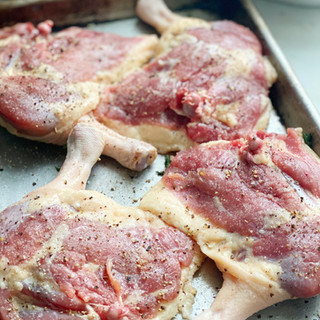





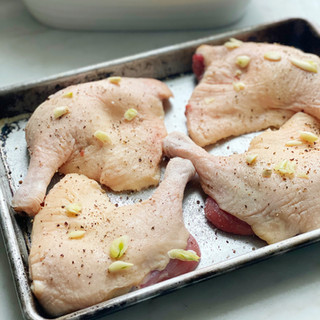



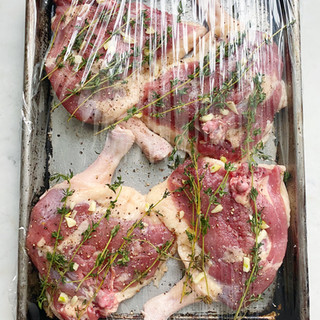













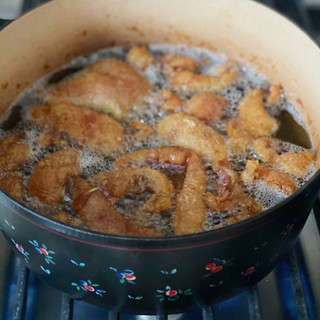

















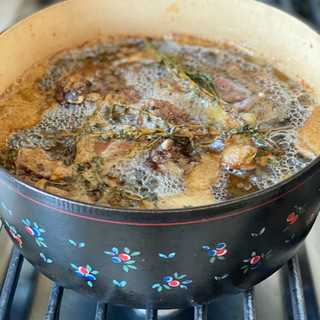

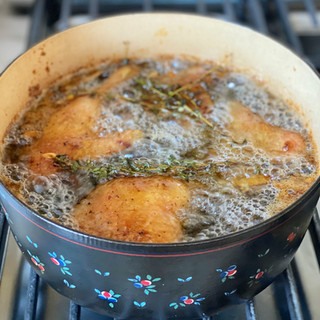







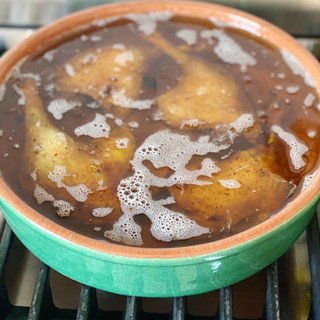

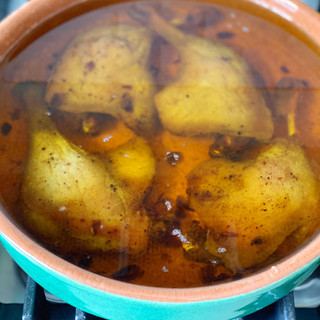















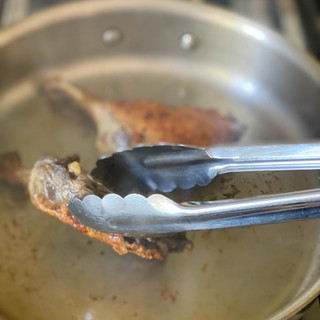











Comments